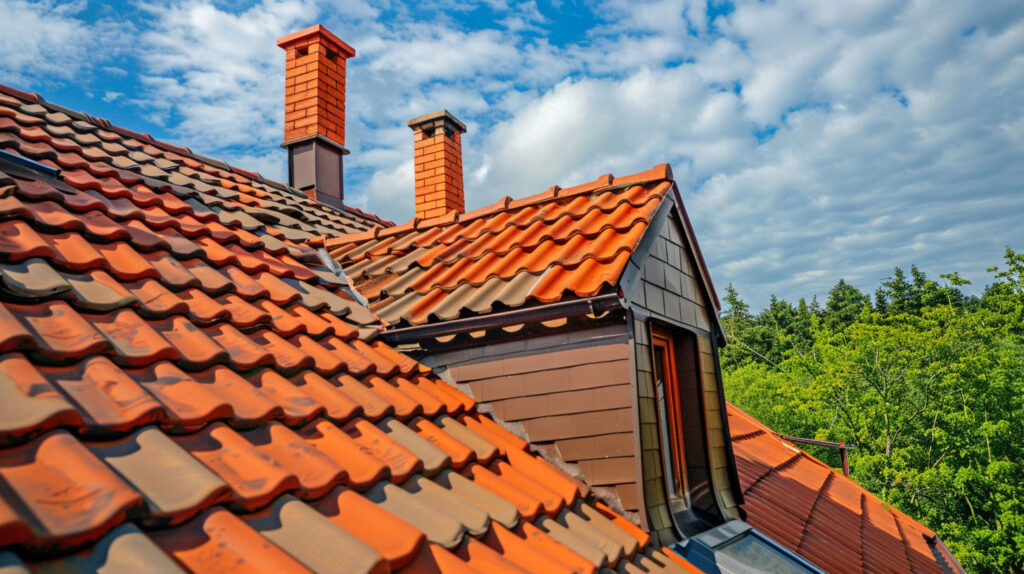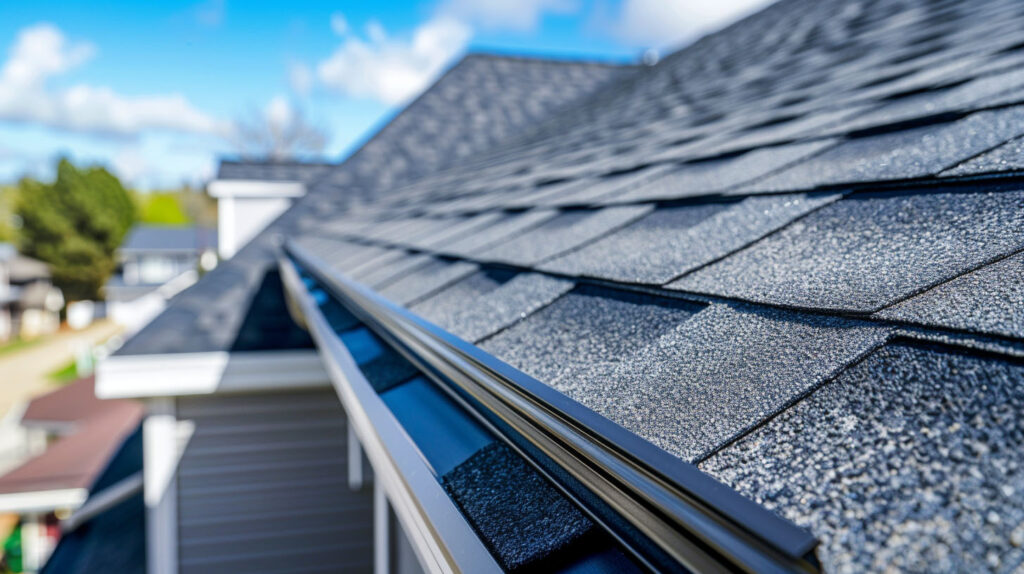Roof Flashing Explained: What It Does and Why It Matters
Roof flashing is a crucial component of any roofing system. It’s typically made from metal and designed to shield your home from water infiltration. Without properly installed, areas prone to leaks, such as chimneys, skylights, and roof valleys, become vulnerable to costly damage. Rest assured, a watertight roof system ensures protection and extends your roof’s lifespan. If you’re wondering how it works and why it matters, Specialist Roofing & Repair brings expertise to Burbank, CA residents with award-winning services.
The Role of Roof Flashing in Protecting Your Home
Roof, including drip edge flashing, plays a vital role in keeping your home safe from water infiltration. Installed along roof intersections, vertical surfaces, and problem areas, it prevents water from seeping into your home. Correct installation ensures a durable watertight barrier you can trust.
Neglected or improperly installed roof increases the risk of leaks and water damage. Left unnoticed, this could lead to costly repairs and impact the integrity of your roofing system. That’s why proper installation is a non-negotiable in roofing solutions.
How Roof Flashing Prevents Water Damage
Properly installed roof creates a watertight seal that significantly reduces the risk of leaks and water damage. By directing water away from vulnerable areas such as chimneys, vents, and roof valleys, thin metal flashing acts as a barrier, preventing water penetration into the roofing system and the interior of your home. This crucial role ensures the lifespan of your roof is maximized, sparing homeowners from costly repairs associated with neglected flashing. Investing in quality materials like metal flashing enhances durability and effectiveness against the elements.

Common Problem Areas Without Proper Flashing
Certain areas of a roof are particularly susceptible to water damage when proper flashing is absent. Roof valleys, roof windows, and the base of a chimney are prime examples; without adequate metal valley or chimney flashing, water can easily penetrate, leading to serious leaks. Similarly, intersections where roofing materials meet vertical surfaces, like walls or skylights, are vulnerable. Neglecting these components can result in costly repairs as moisture compromises the integrity of the entire roofing system. Prioritizing correct installation is essential to ensuring a watertight seal.
Types of Roof Flashing Used in Residential Roofing
Roof flashing comes in different forms, tailored to various vulnerable areas. Each type, including step flashing, is perfect for walls and chimneys, using a piece-by-piece approach alongside shingles. Additionally, it is essential to note that two pieces of flashing, including counter flashing, can enhance effectiveness in critical areas. Valley flashings, a crucial type of flashing, are employed to protect roof intersections with heavy water flow, particularly in open valleys. There are four common types of roof flashing: apron, step, counter, and valley.
Another option is apron flashing, an L-shaped design essential for protecting the base of a wall and dormers. These types offer customized solutions to maintain a watertight system. Ensuring proper installation contributes greatly to the durability and reliability of any roofing material.
Step Flashing vs. Continuous Flashing
Differentiating between step and continuous flashing is essential for a well-performing roofing system. Step consists of individual pieces, often shaped to fit the angles on a plane, creating a watertight seal as shingles are layered. In contrast, continuous flashing is a long piece of flashing that runs along a vertical surface, providing seamless protection against water penetration. Both types serve crucial purposes in preventing leaks, but proper installation by a roofing professional determines their effectiveness in vulnerable areas.
Chimney, Vent, and Skylight Flashing Explained
Vent works similarly, encasing the base to stop water from penetrating the roofing deck. This flashing is vital for ensuring watertight seals for all vents.
For skylights, flashing uses angled designs to fit smooth or pitched roofs. Proper installation ensures no gap exists between skylight frames and surrounding material. In all areas, precision matters to keep these systems effective.

Materials Used for Roof Flashing
Metal flashing, including aluminum flashing, is the gold standard in protection. Various types of metal, including steel, aluminum, and copper, cater to diverse roofing material needs. It serves as a durable and flexible barrier, with its thin form allowing versatile application, including various types of flashing for different roofing situations.
The choice of material ultimately depends on your home’s design and budget. While steel remains cost-efficient and robust, copper adds an aesthetic touch with unmatched durability. With Specialist Roofing & Repair, we ensure only high-quality materials are used.
Steel, Aluminum, and Copper Flashing Options
Choosing metal begins with understanding its unique qualities:
- Steel : Durable, affordable, and fits all roofing styles.
- Aluminum: Budget-friendly but less sturdy than steel.
- Copper: Premium material offering a sleek appearance and long lifespan.
Steel is preferred for everyday use, balancing cost and reliability. Aluminum suits projects prioritising affordability but struggles with wear. Copper is an investment, adding a visual upgrade while boasting excellent corrosion resistance.
Every type should complement your roofing material for maximum effectiveness.
Choosing the Best Material for Burbank, CA Climates
Burbank’s climate requires materials designed for durability. Some suggestions include:
- Aluminum for its lightweight, easy application despite frequent sunny conditions.
- Copper resists rust, ideal for wetter months or occasional storms.
- Steel is an adaptable choice, performing well across varying seasons.
A good condition of your chosen material ensures a watertight seal year-round. The lifespan of your roof can be extended when resistant flashing is paired with professional local expertise.
Signs Your Roof Flashing Needs Repair or Replacement
Repairing or replacing roof flashing is often necessary to avoid water damage. Indicators include visible depreciation or impaired functionality. Always stay vigilant for early signs before damage multiplies.
A professional roofing expert inspects your flashing’s condition, recommending either minor fixes or complete replacements. Whether corrosion or improper sealing compromises your system, taking quick action ensures continued protection.

Visible Damage or Corrosion
Visible damage such as cracks or gaps signals wear. Corrosion, appearing as rust spots on metal flashing, weakens its watertight seal and structural integrity. These issues arise from prolonged weather exposure or poor initial installation.
Damaged flashing can disrupt sealing, allowing water to penetrate the roof deck. Roofing professionals recommend assessing each piece during inspections and using roofing sealants where applicable.
Timely identification prevents damage escalation to surrounding areas, ensuring a steady system.
Leaks and Interior Water Stains
Roof leaks stemming from compromised flashing can show symptoms indoors. Be on the lookout for:
- Staining on walls or ceilings as water breaches protective layers.
- Dripping or pooling during heavy rains near problem zones.
- Rotting wood sections exposed around roof planes.
Get in Touch
Understanding the importance of flashing is essential for maintaining the integrity of your home, particularly when considering a new roof. This crucial element acts as a barrier against water penetration, protecting vulnerable areas from potential damage. Regular inspections and proactive maintenance ensure that your roof remains in good condition, helping to extend the lifespan of your roof. By recognizing the signs of wear or damage early, homeowners can avoid costly repairs associated with roof replacement and uphold their system’s performance for years to come. It’s often advisable to consult a professional roofing contractor, such as those recognized as Owens Corning Platinum Preferred Contractors or Polyglass Quantum Contractors, to address any issues that arise promptly. Additionally, choosing a BBB A+ Rated contractor can provide peace of mind regarding the quality of work.
Frequently Asked Questions
What is the main purpose of flashing?
Flashing’s primary purpose is to create a watertight seal between the roof surface and vertical walls or penetrations. Flashing is a thin material combined with roofing cement, it safely redirects water, keeping your roof free from water penetration and leaks.
What happens if you don’t have roof flashing?
Without roof flashing, water damage escalates rapidly in vulnerable areas like chimneys and roof valleys. Leaks lead to costly repairs, while unprotected zones compromise the entire roof system. Flashing provides essential defense against such risks.
Read our blog: Top Roofing Trends Homeowners Are Following in 2025



